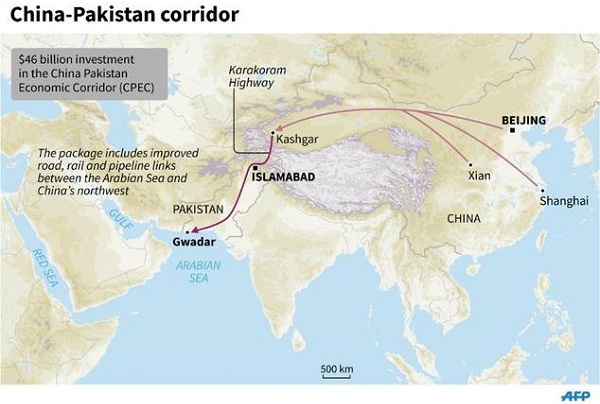
The two components of a great power are economic and military strength. The People’s Republic of China emerged out of a communist revolution and its leader Mao Zedong propounded that “Political power flows from the barrel of a gun”. By late 1970s, China under Deng Xiaoping had realised that modern military cannot be sustained without economic power. His economic reforms for the next three decades allowed defence budget to grow in high double-digits. Beijing’s 2016 defence budget, announced on March 5, is 954 billion yuan (US$ 146 billion). At 7.6% increase over last year, it is the lowest increase in last six years. Yet China has come a long way since US$ 14.6 billion allocated in 2000. China’s total national annual outlay is US$ 2.4 trillion and military expenditure accounts for around 1.35% of its GDP, well below the world average of 2.6%. In spite of recent economic headwinds, her defence outlay is 3.8 times that of India. It is a well-known fact that nearly another 40% of China’s military activities like cyber, intelligence and dual use acquisitions are not reflected in the defence budget. Effectively, the budget is around US$ 180 billion. Trends indicate that China will overtake the US in defence spending by around 2040. The Chinese are busy replacing their relatively old inventories with modern strategic missiles, space-based assets, aircraft carriers, fighter jets, warships and cutting manpower to make the Armed Forces ‘lean and mean’ with a proposed cut of 300,000 in the 2.3 million strong force. China spends on defence more than the next three largest Asian economies—Japan, India, and South Korea—put together. China's military build-up has rattled the region, particularly because they have taken an increasingly assertive stance in its territorial disputes.
The People’s Liberation Army is still the world's largest standing military. In December 2015, PLA established a Rocket Force to oversee its strategic missiles. In February 2016, it replaced seven military area commands with five PLA theatre commands. Beijing is looking to increase naval reach and is building its second, entirely domestically designed, aircraft carrier. China has state-of-the-art aircraft programmes which include two stealth fighters (J-20 and J-31), large military transport aircraft Y-20, and AWACS KJ-2000. They already have a large nuclear capable Inter Continental Ballistic Missile force. China is today the world’s third largest arms exporter. It is also moving aggressively onto the world centre stage with the reclamation of islands in South China Sea; the construction of US$ 46 billion Xinjiang-Gwadar road-rail corridor connecting to the strategic Strait of Hormuz at the mouth of Indian Ocean; and the trans-Siberian oil pipeline from Russia. China is near world leader in cyber-warfare.

On the other hand, India’s defence outlay for 2016-17 is US$ 38 billion, an increase of 1.16% over last year’s budget estimates, albeit a 9.76% increase over actual defence budget spend. India’s capital outlay required for modernisation has actually decreased. The rising US dollar will further reduce India’s funds for modernisation. India’s defence budget has reduced to 15.8% of the estimated gross tax revenue and 13% of the government expenditure for the coming year. US defence budget proposed for 2016-17 is US $534 billion (3.3% of GDP) as base budget and is 3.8 times China’s. The US additional allocates US $226 billion for overseas wars and other miscellaneous code-heads. China’s per capita defence budget is just US$ 106 vis-à-vis the US at US$ 1859 and India at US$ 35. Chinese technology is still 10-15 years behind the US. Lack of combat experience is a factor. Chinese pilots last flew combat in Vietnam. Pakistan’s defence budget in June 2015 was US$ 7.7 billion. Pakistan too has a large hidden defence budget and separate funds are used for new acquisitions. Pakistan also has monetary support from Arab countries and is a recipient of huge military aid from the US as part of Afghanistan coalition support fund. Recently the US announced the sale of additional F-16s to Pakistan.
India has to cater for a two-front war in case of a Sino-Pak collusion. China is pushing aggressively into areas encircling India by building all-weather roads, rail tracks, airfields and missile silos. They have built roads and airfields in Myanmar; the Hambantota port complex in Sri Lanka; port modernisation at Chittagong and on Sonadia Island in Bangladesh; China is getting closer to volatile Nepal and is one of the biggest investors in Africa. On the other hand, like with India, China has historic animosity and dispute with Japan over East China Sea islands. The Philippines and Vietnam have questioned Beijing’s claim to a huge oil-bearing area of the South China Sea. China’s massive build-up of military infrastructure in Tibet, the series of dams on the Brahmaputra, overt and covert support to Pakistan to build its aircraft industry, missile technology and nuclear power, and cyber-attacks bother India. China’s territorial claims in Ladakh and Arunachal Pradesh are thorns in the relation between the two countries.
India needs to have at least two more operational airfields in the Assam valley, deploy more Surface-to-Air missiles of S-330/S-400 class, accelerate induction of mountain radars, increase satellite-based surveillance and create an independent Cyber Command. Most analysts have opined that India needs to allocate 2.5% of GDP, up from current 1.7%, to bridge the gap to respectable levels and catch up on modernisation. Hope someone is taking note.